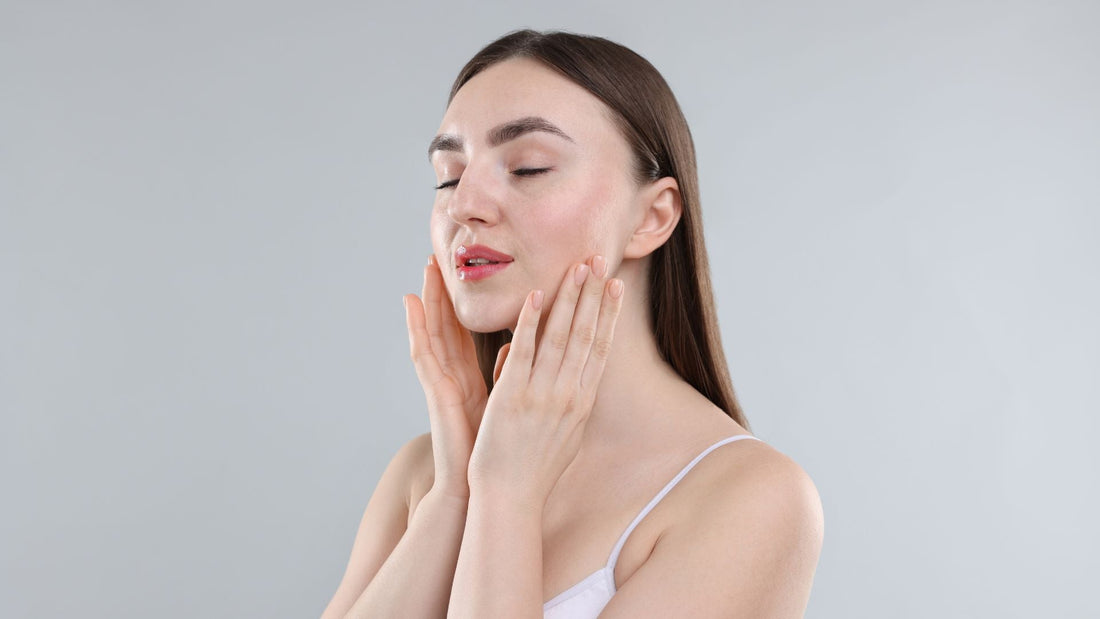
Red Light Therapy for Skin Health
The skin is our largest organ, acting as both a protective barrier and a reflection of overall health. Over time, however, skin undergoes natural changes, wrinkles, fine lines, pigmentation, scarring, or slow wound healing. Environmental stressors like UV exposure, pollution, and lifestyle habits can accelerate these effects, while conditions such as acne, eczema, or psoriasis create additional challenges.
The beauty and dermatology industries have long turned to injectables, chemical peels, or invasive procedures to address these concerns. But an increasing body of research shows that a natural, non-invasive option, Red Light Therapy (RLT), can support skin rejuvenation and healing without the risks.
How Red Light Therapy Works for Skin
Red Light Therapy uses low-level wavelengths of red (around 630–660nm) and near-infrared light (around 830nm) to stimulate skin at the cellular level.
The light penetrates into the skin and interacts with the mitochondria (the energy factories inside cells). This results in:
-Increased ATP production – boosting cell repair and regeneration.
-Improved circulation – delivering more oxygen and nutrients to tissues.
-Reduced inflammation – calming redness and irritation.
-Collagen and elastin stimulation – improving skin firmness, elasticity, and smoothness.
These effects make RLT one of the most multi-functional natural treatments for overall skin health.
Anti-Aging Benefits
Aging skin is marked by a loss of collagen and elastin, leading to wrinkles, sagging, and dullness. RLT helps counter these changes by stimulating fibroblasts (the cells that produce collagen and elastin).
-A controlled trial published in Photomedicine and Laser Surgery (2014) found that red light therapy significantly improved fine lines, wrinkles, skin texture, and collagen density in participants.
-Another study in the Journal of Physical Therapy Science (2017) reported smoother wrinkles and improved skin moisture in women aged 30–55 after red light treatments.
By enhancing the skin’s own repair mechanisms, RLT provides a gentle, natural alternative to invasive anti-aging procedures.
Skin Healing and Recovery
RLT is not just cosmetic, it plays a significant role in healing and recovery:
-Scars and Wound Healing: Multiple studies show RLT accelerates wound closure, reduces scar formation, and supports tissue repair. Patients treated with red light often report less visible scarring compared to untreated groups.
-Burns and Sunburns: Research in Inflammation (2016) and Lasers in Medical Science (2018) found that RLT reduced inflammation in burn wounds and stimulated the development of new blood vessels and fibroblasts, speeding recovery.
-Post-Surgical Healing: A meta-analysis reviewing over 40 studies (both human and animal trials) confirmed that RLT shortened recovery time and reduced inflammation after surgery.
Skin Conditions Supported by RLT
Beyond anti-aging, clinical research has shown RLT can support management of a wide range of skin conditions:
Acne
A 2013 study found that RLT reduced sebum production and inflammation, helping control breakouts naturally.
Eczema & Psoriasis
Trials indicate that RLT can reduce symptoms without adverse side effects, making it a safe complementary therapy.
Pigmentation Disorders
Research in Experimental Dermatology (2019) showed RLT helps repigmentation in vitiligo by stimulating melanocyte activity and modulating immune responses.
Cold Sores
Studies suggest red light reduces pain and outbreak frequency by supporting local immune activity and tissue repair.
Red Light Therapy and Skin Hydration
Another exciting benefit highlighted in recent studies is improved skin hydration. As RLT stimulates microcirculation and enhances nutrient delivery, the skin’s natural barrier function is strengthened. This allows it to retain moisture more effectively, resulting in smoother, plumper, and healthier-looking skin. In a 2015 study published in the International Journal of Molecular Biology, continuous red light exposure was associated with increased skin moisture and elasticity, both of which are crucial in preventing early signs of aging.
Preventative Skincare with Red Light Therapy
While many people turn to RLT to correct existing skin concerns, it can also be used as a preventative measure. By regularly supporting collagen production, reducing oxidative stress, and improving circulation, RLT helps maintain youthful skin before wrinkles and sagging appear. Dermatologists suggest that integrating red light into a skincare routine early can delay common age-related changes, offering a proactive approach to skin longevity. This positions RLT not just as a corrective therapy, but as a long-term strategy for radiant and resilient skin health.
Why Red Light Therapy Stands Out
Unlike injectables or chemical-based treatments, RLT is:
-Non-invasive – no needles, no downtime.
-Drug-free – no harsh chemicals or dependency risks.
-Clinically studied – backed by decades of dermatological research.
-Safe and well-tolerated – with no significant adverse effects reported in trials.
The Bottom Line
Red Light Therapy is one of the most versatile, natural, and evidence-backed skin treatments available today. From reducing wrinkles and improving complexion to speeding healing and supporting conditions like acne, eczema, and burns, RLT offers safe, science-supported rejuvenation.
As the research continues to grow, it’s clear why RLT has become a trusted tool not only in clinics and dermatology practices but also for individuals looking to maintain healthier, more radiant skin naturally.
References
-
Hamblin M. (2018). Mechanisms and Mitochondrial Redox Signaling in Photobiomodulation. Photochemistry and Photobiology, 94:199-212.
-
Emília de Abreu Chaves M., et al. (2014). Effects of low-power light therapy on wound healing. An Bras Dermatol. 89(4): 616–623.
-
Wunsch A., Matuschka K. (2014). Controlled Trial on Red and Near-Infrared Light for Wrinkles and Collagen Density. Photomedicine and Laser Surgery, 32(2): 93-100.
-
Kim HK, Choi JH. (2017). Effects of Low-Level Light Therapy on Wrinkles and Moisture Content. Journal of Physical Therapy Science.
-
Avci P., Gupta A., et al. (2013). Low-level laser (light) therapy (LLLT) in skin: stimulating, healing, restoring. Seminars in Cutaneous Medicine and Surgery, 32(1): 41-52.
-
Yu S., Lan CE., et al. (2019). Repigmentation induced by photobiomodulation therapy in vitiligo. Experimental Dermatology.
-
Silveira PC., et al. (2016). Effect of Red Light on Burn Wound Healing. Inflammation.
-
da Silva Melo, Alves LP., et al. (2018). LED Phototherapy in Burns. Lasers in Medical Science.